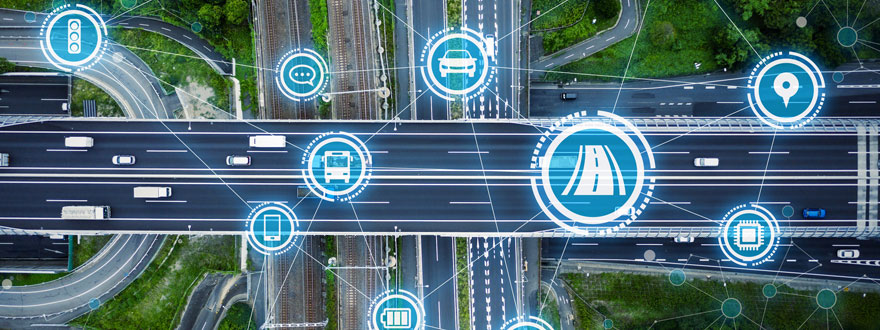FHWA Funding Opportunity for Transportation Technology Grants

The Federal Highway Administration (FHWA) is offering $60 million in grant funding for organizations to use for implementing or initiating transportation technology-based projects. The grant program is part of a larger effort to encourage organizations to use technology to combat congestion and promote safety. The deadline to apply for FY19 is August 5, 2019.
The FWHA has listed the eligible projects for which organizations can use the funds, including:
- advanced transportation management technologies
- advanced public transportation systems
- advanced safety systems
- transportation system performance data collection, analysis and dissemination systems
Visit the FWHA’s fact sheet for the complete list.
Now in its fourth year, the FHWA’s Advanced Transportation and Congestion Management Technologies Deployment Program (ATCMTD) has awarded over $163 million, split between 28 projects in 19 U.S. states.
Among those eligible to apply
- state departments of transportation
- local government and transit agencies
- metropolitan planning organizations with populations over 200,000
- groups of research or academic institutions
- partnerships between a variety of such agencies
The above is a partial list. For more information, view the grant opportunity.
Past winners include: the Florida Department of Transportation’s SunStore project; the Virginia Port Authority’s truck reservation system, and the Texas Department of Transportation in conjunction with Arizona, California, and New Mexico.
Grant winners are awarded up to 20% of the $60 million from the program, but winning projects in previous years have used their projects to receive nearly $100 million in additional funds from public and private sources.
Determining winners
The Secretary of Transportation determines the winner based on, among other criteria, how the proposed project accomplishes the following.
| Reduces costs | Promotes an environmentally-friendly solution | Reduces congestion and traffic crashes |
| Increases transportation system safety | Reduces maintenance costs | Provides for efficient and reliable movement of goods and services |
Applicants need to submit a comprehensive project proposal to qualify. Proposals of previous winners include, but are not limited to:
- detailed overall project and specific technology descriptions
- project visions, goals and objectives
- project partnership plans
- geographic descriptions of the proposed project areas
- historical issues and challenges necessitating the project
- explanations of how the proposed project will solve existing problems
- a comprehensive project schedule
- barriers to project completion
- analyses of how the project fulfills the goals of the grant program
- the role of staffing in the project
- how project success will be qualitatively and quantitatively measured
- elaborate graphs, pictures, tables, diagrams and other visual aids
About the applications
View the full list of FY2017 applicants. And, view the redacted applications of previous winners.
The application
| Project Name | |
| Eligible Entity Applying to Receive Federal Funding | |
| Total Project Cost (from all sources) | |
| ATCMTD Request | |
| Are matching funds restricted to a specific project component? If so, which one? | |
| State(s) in which the project is located | |
Is the project currently programmed in the:
|
|
| Technologies Proposed to Be Deployed (briefly list) |
The project proposals generally include:
- Summary table
- Project description
- Project and technology descriptions
- Vision, goals and objectives
- Partners in the agreement
- Geographic area of proposed project
- Issues and challenges proposal aims to solve
- History of the problems and challenges
- How project will solve the problems
- Schedule of implementation
- Barriers to project completion
- How project benefits goals of the grant
- How staffing plays into the proposal
- How project success will be measured
More about the program
For more information on the grant program or apply, visit the FWHA’s information page: Fixing America’s Surface Transportation Act





